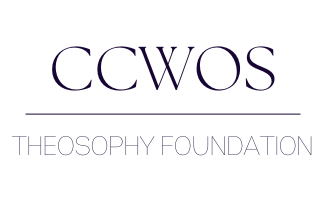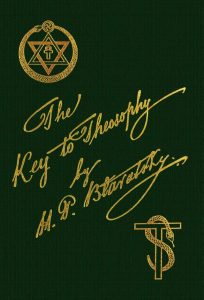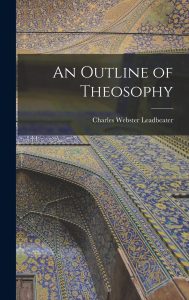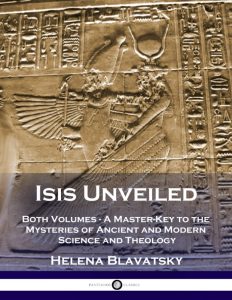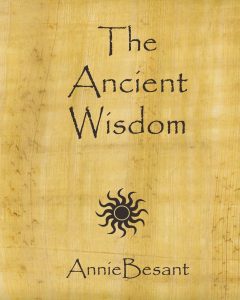
The Ancient Wisdom
For those intimidated by Madame Blavatsky’s massive and complex tome, The Secret Doctrine, Annie Besant presents the basic tenets of Theosophical thought in a concise, easy to digest format. While a much easier read, this book still delivers the full spectrum and depth of the Theosophical philosophy.
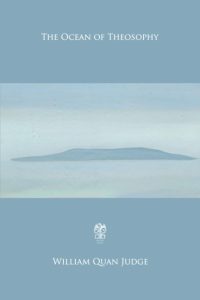
The Ocean of Theosophy
The Ocean of Theosophy, by the Irish-American author, mystic, esotericist, and co-founder of the Theosophical Society William Quan Judge, was originally published in 1915.The work was intended by Judge to be illustrative of Theosophy “in such a manner as to be understood by the ordinary reader”. It covers much of the subject matter that is within Madame Blavatsky’s The Secret Doctrine, and is easily understood by those who are new to theosophy and philosophical discourse alike, by providing a succinct summary of all of the core ideas of Theosophy. This is no mean feat as the work covers some of the more advanced and esoteric theosophical and perennial topics, such as: the sevenfold nature of man, karma, reincarnation, the dangers of psychic practices & pseudo-occultism, the Earth’s being, cosmic & terrestrial cycles, the afterlife, and the existence of advanced or superhuman beings. Despite this it is one of the most clear and easily understood books on the topic of Theosophy existing to this day.
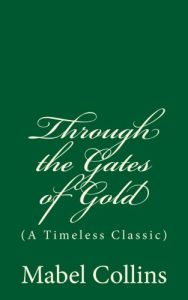
Through the Gates of Gold (A Timeless Classic): By Mabel Collins
Every man has a philosophy of life of his own, except the true philosopher. The most ignorant boor has some conception of his object in living, and definite ideas as to the easiest and wisest way of attaining that object. The man of the world is often, unconsciously to himself, a philosopher of the first rank. He deals with his life on principles of the clearest character, and refuses to let his position be shattered by chance disaster. The man of thought and imagination has less certainty, and finds himself continually unable to formulate his ideas on that subject most profoundly interesting to human nature,—human life itself. The true philosopher is the one who would lay no claim to the name whatever, who has discovered that the mystery of life is unapproachable by ordinary thought, just as the true scientist confesses his complete ignorance of the principles which lie behind science.
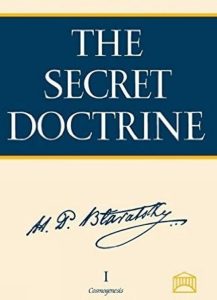
The Secret Doctrine: The Synthesis of Science, Religion, and Philosophy (2-volume set)
Continuously in print for over 100 years, the SD remains today the most comprehensive sourcebook of the esoteric tradition, outlining the fundamental tenets of the Secret Doctrine of the Archaic Ages. Challenging, prophetic, and strikingly modern, it directly addresses the perennial questions: continuity of life after death, purpose of existence, good and evil, consciousness and substance, sexuality, karma, evolution, and human and planetary transformation. Based on the ancient Stanzas of Dzyan with corroborating testimony from hundreds of sources, these volumes unfold the drama of cosmic and human evolution — from the reawakening of the gods after a Night of the Universe to the ultimate reunion of cosmos with its divine source. Supplementary sections discuss relevant scientific issues as well as the mystery language of myths, symbols, and allegories, helping the reader decipher the often abstruse imagery of the world’s sacred literature. This edition is a character-for-character, line-for-line reproduction of the two-volume 1888 first edition. It is set in new type which closely matches the Miller & Richard Old Style font used in the original. The Index at the end of Volume II is the version revised in 1925.
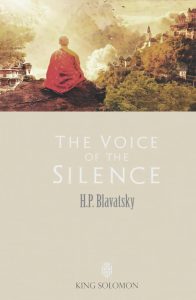
The Voice of the Silence
The Voice of the Silence is a book by Helena Petrovna Blavatsky. It was written in Fontainebleau and first published in 1889. According to Blavatsky, it is a translation of fragments from a sacred book she encountered during her studies in the East, called “The Book of the Golden Precepts”.
- Devotional classic of theosophy, concerning the seeker’s inner awakening and development, leading to a choice between the compassionate path and the path for self alone.
- Zen Buddhism scholar Dr Daisetz Teitaro Suzuki wrote about the book: “Undoubtedly Madame Blavatsky had in some way been initiated into the deeper side of Mahayana teaching and then gave out what she deemed wise to the Western world…”(Eastern Buddhist, old series, 5:377) He also commented: “Here is the real Mahayana Buddhism.” (The Middle Way, August 1965, p. 90.)
Contents
- The Voice of the Silence
- The Two Paths
- The Seven Portals
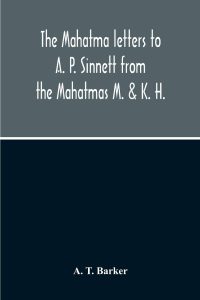
The Mahatma Letters To A. P. Sinnett From The Mahatmas M. & K. H.
This book has been considered by academicians and scholars of great significance and value to literature. This forms a part of the knowledge base for future generations. So that the book is never forgotten we have represented this book in a print format as the same form as it was originally first published. Hence any marks or annotations seen are left intentionally to preserve its true nature.
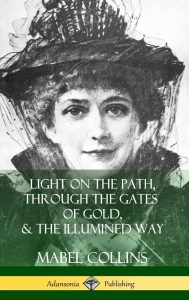
Light on the Path, Through the Gates of Gold & The Illumined Way
Mabel Collins offers her views on reality and the world around us in this superb collection of three of her most popular works: Light on the Path, Through the Gates of Gold and The Illumined Way. Each of these works offers an inspirational account of both of the tenets of theosophy, and the outlook its members had upon the world. The first part of Light on the Path is comprised of a a series of rules, which briefly cover the behaviors which adherents to spiritualism promoted by the theosophic society should follow. The second part of the book is more of a simple, instructional guide to the study of the occult. Collins discusses how a person should prepare and undertake their personal study of the supernatural; according to Collins, the laws of ‘super-nature’ govern the Earth, its atmosphere, and the wider universe.
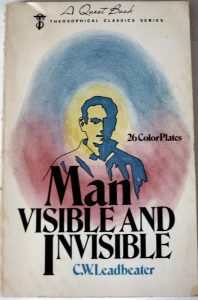
Man, Visible and Invisible (Theosophical Heritage Classics)
This esoteric classic examines the invisible bodies of humans, showing how the colors of the aura change with different emotional states.
